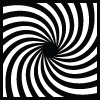Subtotal: $50 USD
ValhallaRoom V1.0.6: Introducing Dark Room
I have just released version 1.0.6 of ValhallaRoom. You can download the demos from the usual place, and all current ValhallaRoom customers should have received a link to the updates (send me an email if you haven’t received your links yet).
In addition to a few bug fixes, version 1.0.6 introduces a new reverb mode to ValhallaRoom: Dark Room. This new reverb departs from the high fidelity path taken by the other 4 reverb modes in ValhallaRoom. It is deliberately low-fi, with noisy interpolation, no high frequencies above 11 kHz, and a late reverb that can have a low initial echo density. It also has a wide stereo image, a clear decay with lush randomized chorusing, and sits in a mix quite nicely. An added bonus is that the CPU is significantly lower than the other ValhallaRoom reverb modes.
Why add a lo-fi reverb mode to ValhallaRoom? I’m not really sure. After doing this for about 12 years, I’ve learned to follow my instincts on this stuff, even if it takes me in strange directions. Plus, I wanted to add something new to ValhallaRoom, as a way of saying thanks to all of the customers who have supported my work.
I was also inspired by some recent studies of the Lexicon 224, the EMT250, and other vintage reverbs. These early digital machines often had very noisy interpolation, sparse initial echo density (at least by modern standards), and sampling rates that seem primitive today. They also were useful for creating a “larger-than-life” sound, that is described to this day as warm and spacious. I noticed that a lot of these classic reverbs had a very limited frequency response, so I figured it would be worth adapting some of these old-school limitations to the more modern algorithm architectures found in ValhallaRoom.
Dark Room has identical controls to the other reverb modes, but produces a noticeably different initial sound. With Early Send set to 0, the Late Decay can have a marked amount of initial “flutter” or “grain,” similar to the 224 Concert Hall with the Diffusion control set low. A few usage tips:
- The Late Size control can be used to adjust the speed of the “flutter,” with larger sizes corresponding to more obvious and slower echos.
- By setting Early Send to 1.0, and adjusting the Early Size to 40 msec or later (depending on the Late Size), the flutter in the Late reverb can be totally eliminated. This is similar to how the Diffusion control works in older Lexicons, but with the advantage that the Early reverb has far less coloration than the series allpasses used for the diffusors in many “classic” reverbs. The Late Size can then be adjusted to get the desired stereo width – this can get really big.
- Setting DEPTH to 1.0 results in the most “vintage” sound, while values less than 1.0 allow the user to dial in some early reflections.
- With Early Send set to 1.0, and using larger Early Size values (>100 msec), the Late Reverb will have a slower initial attack. This is similar to how the Depth control worked on the 224 and 224X/L, as well as the Shape and Spread controls on the 480L and later reverbs.
- The Late High Mult and Late High Xover have an effect on the initial tone of the late decay, similar to the Concert Hall algorithm on the 224XL and the Small/Large Concert Hall B on the 224. By setting High Mult to 0.1X, the user can simulate the -6dB/octave filters used on these older boxes.
- Turn up the Early and Late Mod Depth when using Dark Room. The older algorithms used a LOT of pitch modulation to avoid metallic decays. The Dark Room algorithm uses a different architecture that is less prone to sounding metallic, but if you want that big, lush, spacey decay, modulation is a must.
Here’s a preset that can be used as a good starting point for the Dark Room reverb mode:
[sourcecode language=”xml”]<ValhallaRoom pluginVersion="1.0.6" presetName="DarkStartingPoint" mix="0.289999992" predelay="0" decay="0.0265265256" HighCut="0.58523488" earlyLateMix="1" lateSize="0.720000029" lateCross="0.25999999" lateModRate="0.202020198" lateModDepth="0.430000007" RTBassMultiply="0.413333327" RTXover="0.0666666701" RTHighMultiply="0" RTHighXover="0.410067111" earlySize="0.0581581593" earlyCross="0" earlyModRate="0.0909090936" earlyModDepth="0.800000012" earlySend="1" diffusion="1" type="0.416666657"/>[/sourcecode]
 Valhalla Delay
Valhalla Delay 



Wow, tons of character. I really like this. Only listening in headphones so far, can’t wait to get home and try it.
SOLD!
I love VRoom. You have created a great reverb that vibes well with my old bucket brigade and spring reverbs.